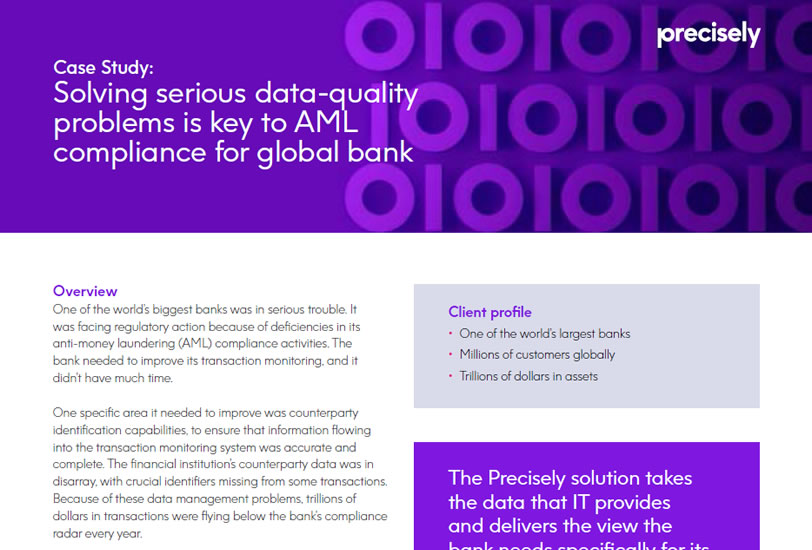Customer Story
Solving Serious Data-Quality Problems is Key to AML Compliance for Global Bank
Overview
One of the world’s biggest banks was in serious trouble. It was facing regulatory action because of deficiencies in its anti-money laundering (AML) compliance activities. The bank needed to improve its transaction monitoring, and it didn’t have much time.
One specific area it needed to improve was counterparty identification capabilities, to ensure that information flowing into the transaction monitoring system was accurate and complete. The financial institution’s counterparty data was in disarray, with crucial identifiers missing from some transactions. Because of these data management problems, trillions of dollars in transactions were flying below the bank’s compliance radar every year.
Business challenge
The bank prepared to roll out a new transaction monitoring system on a six-month timeline, and improving the quality of the information being pulled into the system was a top priority. The adage “poor data kills compliance” rang true with the management team. It was a time-sensitive initiative, as the data-quality problems needed to be resolved before the transaction monitoring system went into production. The financial institution already worked closely with two large business intelligence vendors, both of which would have been willing to build systems, free of charge, for validating and supplementing the bank’s counterparty information. However, the bank lacked confidence that either of the other vendors could provide the breadth and depth of entity resolution functionality it needed, and it knew they couldn’t do so within its six-month window for deployment.
Read more about how AML compliance and how this global bank achieved 3 million transactions per hour, consolidating more than 80 percent of the identified third parties.
